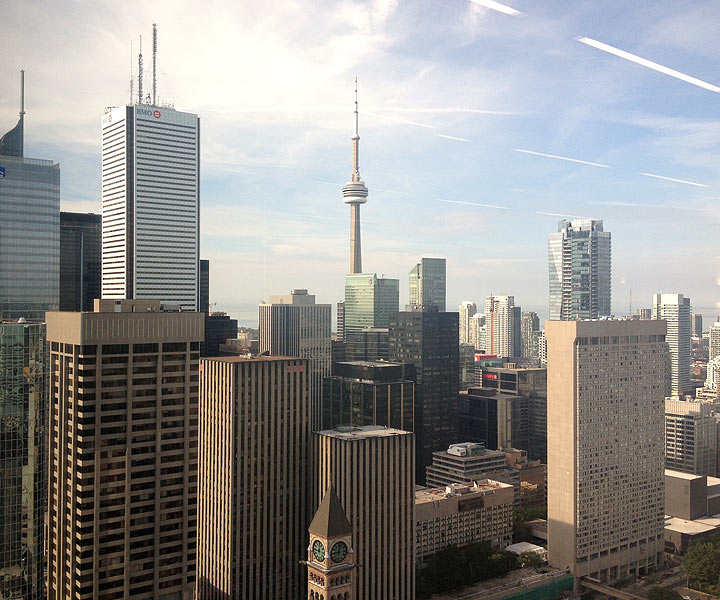Last month, I mentioned how to build a better Toronto through great architecture utilizing form and function. Not just planners, but citizens should understand how transit, economic development, architecture and other subject areas play roles in building great cities. I propose three big ideas.

Toronto must have a regional identity
Toronto should be thinking beyond its municipal borders. Cities are the economic engines of states, provinces and countries. Toronto should be thought of as a mega region. Some say it would the epicentre within the Quebec City-Windsor corridor. Others such as Richard Florida portends that Toronto’s economic importance stretches to Buffalo and Detroit. Toronto’s greatest trade partner is New York followed by Detroit and Chicago. But as a region, Toronto must think beyond North America to be successful.
Leaders with a vision think inside and outside their city’s borders. They think globally, regionally and locally. Bruce Katz and Jennifer Bradley from the Brookings Institution in Washington, DC are authors of the book, The Metropolitan Revolution. At the Detroit+Toronto Symposium last month, references were made to regional governance, leadership and to this book by several panel members. Earlier this year I had a chance to read this book and was interested to see how mayors such as John Hickenlooper and Antonio Villaraigosa were able to engage fellow politicians from surrounding cities and were able to put aside the differences of their political fiefdoms aside for the greater good of their citizens.
With federal and state governments in the United States in political gridlock, city leaders decided they need to come up with creative measures in order to move forward. To date, there have been successful creative mechanisms such as the passing of Measure R in Los Angeles, an infrastructure trust in Chicago (which I will raise in a moment) and the development of a public-private partnership to fast track the construction of Denver’s regional light rail network.
Canadian cities constantly have their hats in hand waiting for federal and provincial funding for infrastructure projects to come their way. Our infrastructure is crumbling and piecemeal funding does not help for the longer term. Much of the political capital is wasted at the federal level when it should be provinces who should be taking the brunt of the blame. It is time the Greater Toronto Area and the other city regions to begin to visit or revisit regional governance for the greater good.
Infrastructure Banks
Toronto and many other Canadian cities currently rely on gas taxes, property taxes and other piecemeal funding to fund major infrastructure projects. But it is not enough. Mayors have suggested developing charters where cities could develop new revenue streams such as a local sales tax. Through the City of Toronto Act, city officials can implement other taxation measures to raise revenues such as the now defunct Vehicle Registration Tax. There needs to be stable and sustainable funding sources.
An infrastructure bank is an idea that Toronto should consider. In 2012, Chicago began with a non-profit infrastructure bank where private capital would be raised while still retaining public ownership. In the U.S., there have been calls to develop such banks at the state level. Councillor Kristyn Wong-Tam has been leading the charge to develop a Bank of Toronto. A Bank of Toronto would reinvest city profits and revenues and in turn, would be reinvested into infrastructure projects of significance.
Whatever the shape an infrastructure bank would take, it is an idea worth considering when looking at funding future projects.
Philanthropy
Councillor Karen Stintz went on record at the Detroit+Toronto symposium mentioning that because of Toronto’s culture, philanthropists such as Dan Gilbert and the Kresge Foundation would not fund projects such as the M1 Woodward Streetcar Line. Passion for the city must go beyond our politicians. It must come from its citizens and also the business community. Philanthropy does exist when business leaders contribute to hospitals and universities but they should extend to major infrastructure projects.
A recent example has come out of Los Angeles where a national philanthropic organization that provides support to distressed communities has put up $100 million ($105 million Canadian) in capital to help 15 communities build affordable housing located near transit stations.
Waiting for Godot
As there continues to be a lack of political will from our senior governments, city leaders can take the initiative together as a region to be innovative and creative by building for the future. Engage with the business community on how they can contribute. Planners can only plan so much while waiting for the proverbial funding hat to be filled.




Comments